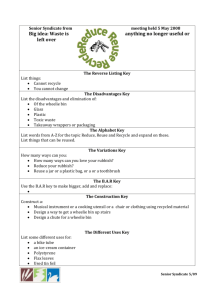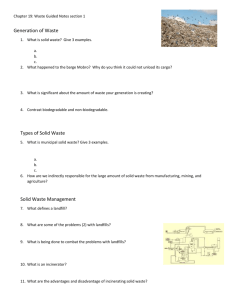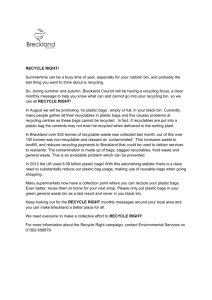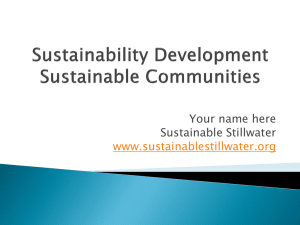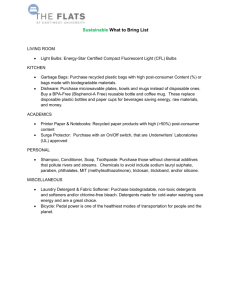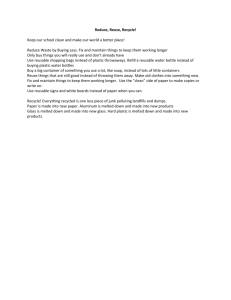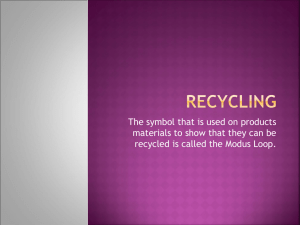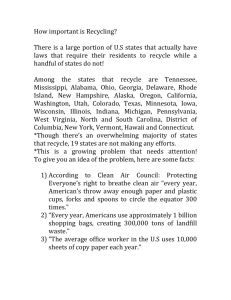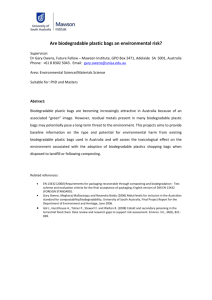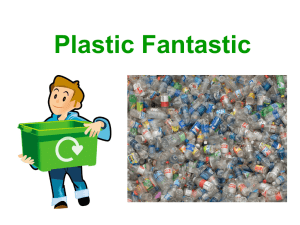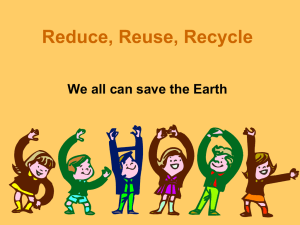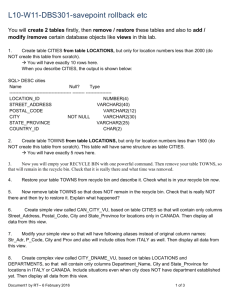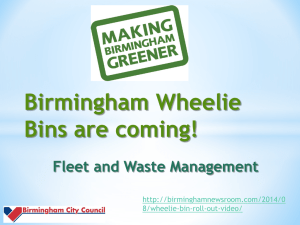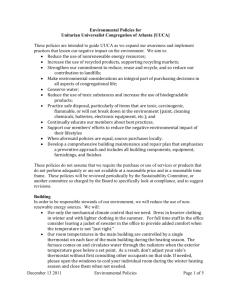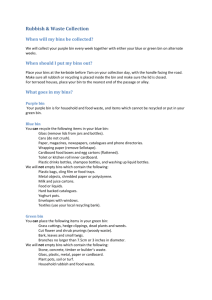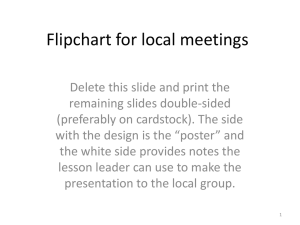Reduce, Reuse, Recycle - eco-schools
advertisement
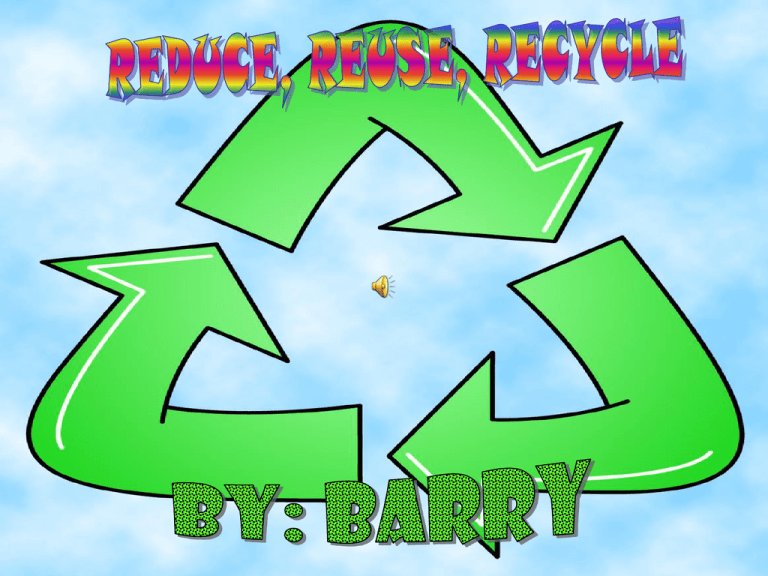
The 3 R’s • Reduce ~ Reduce means to cut down on the amount of waste being thrown out • Reuse ~ Reuse means to use things over and over again and find new uses for objects e.g. use a water bottle over and over for school! • Recycle ~ Recycle means to re-use the item and create something else with it. • The average person throws away 726 kilograms of waste each year! • The average family throw away the amount equal to half a fully grown elephant each year. Doesn’t sound that bad? That’s equal to 1 . 5 TONS of rubbish each year… Types of waste • There are 2 types of waste, biodegradable and non-biodegradable. • Biodegradable means it’s able to rot naturally and non-biodegradable can’t rot naturally. • Examples of biodegradable waste include garden and kitchen waste like potato skins and banana skins. Newspaper is also biodegradable! Click the picture to learn more about biodegradable and non-biodegradable waste! How to STOP! • Buy things loose. When you’re buying vegetables or fruit buy them without the packaging, as this produces less waste. • Make a compost pile and have a brown bin at home • For more info on how to stop waste visit Kids' Stuff About Waste Reduction and Recycling Plastic Bags • 1% of plastic bags are recycled. • A few years ago a study showed that 8 million pounds of plastic bags are thrown away each year. • If you don’t recycle them, animals can eat them and get stuck in their throat and they will suffocate. • Last year 4 billion steel cans were recycled in the UK. Don't forget that all steel is 100% recyclable and can be recycled many times without losing any quality. Paper • 1 ton of recycled paper can save 17 trees! • Reuse paper around the home as scrap paper or packing material. Envelopes can also be reused. • Another good way to reduce paper is to read the news online – this will stop the massive amount of trees being cut down for newspapers alone! • • • • • • • In our school we do lots of things to reduce, reuse and recycle. • We recycle old glass lenses, stamps and mobile phones, on top of every thing else like paper, cardboard and plastic bottles. We have a compost bin, a breathing area, a green house and every class has its own blue bin. We have a garden for birds, rodents, insects and more! We even have a newly refurbished our P6 vegetable garden!!! Our school runs 3 bus services, cutting down on the amount of CO2 we create! We also use our textbooks over and over and over again, helping to save trees! We have an eco-schools club run by Ann Hegarty and we have 2 green flags! Rubbish being CRAMMED into a landfill site. Waste being dumped… A recycling centre?!?! What to put in your blue bin. • Paper • Cardboard – e.g easter egg boxes • Christmas, birthday and special occasions cards. • Milk cartons << For more click • Plastic bottles here • Glass bottles • Newspaper What NOT to put in your blue bin. • Hot ashes • Organic waste • Animal waste • Plastic These are able to go into your brown bin along with small amounts of newspaper.



